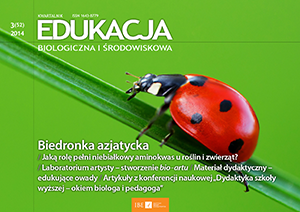Biedronka azjatycka
Multicolored Asian lady beetle
Author(s): Krzysztof KołątajSubject(s): Energy and Environmental Studies, Regional Geography
Published by: Instytut Badań Edukacyjnych
Keywords: Multicolored Asian lady beetle; invasive species; introduction, aphids; threat to native species; morphological variability;
Summary/Abstract: Multicolored Asian lady beetle (Harmonia axyridis) originates from middle-east Asia. It is an invasive species, which can be found in the majority of continents, due to its introduction on a wide range in USA and in Europe. It was commonly applied as a pest agent against aphids in the field crops, orchards, gardens and in greenhouses. In Poland this beetle was first time recorded in 2006. Since that moment it colonized substantial area of Poland. In 2008 the Polish Ecological Research Centre started to lead the monitoring of propagation of this species within the country. Despite the fact that this beetle is able to reduce very effectively the populations of aphids and other similar pests, it become a threat to native species of lady beetles and burdensome to people. Apart from this, Multicolored Asian lady beetle can cause some damage in fruit, what can take a place particularly when the level of populations of aphids is low. Especially wine producers suffered from financial losses caused by this insect. Before the winter it can quite often migrate in large number into the buildings and flats and stain the walls, furniture, clothes or electronic equipment. It can also bite people and cause allergic reactions at some of them. It is an aggressive predator with high reproductive potential. In the newly occupied habitats it can disturb the ecological balance of these places by displacing native species. Very characteristic for multicolored Asian lady beetle is extremely high morphological variability.
Journal: Edukacja Biologiczna i Środowiskowa
- Issue Year: 2014
- Issue No: 3
- Page Range: 25-30
- Page Count: 6
- Language: Polish
- Content File-PDF

